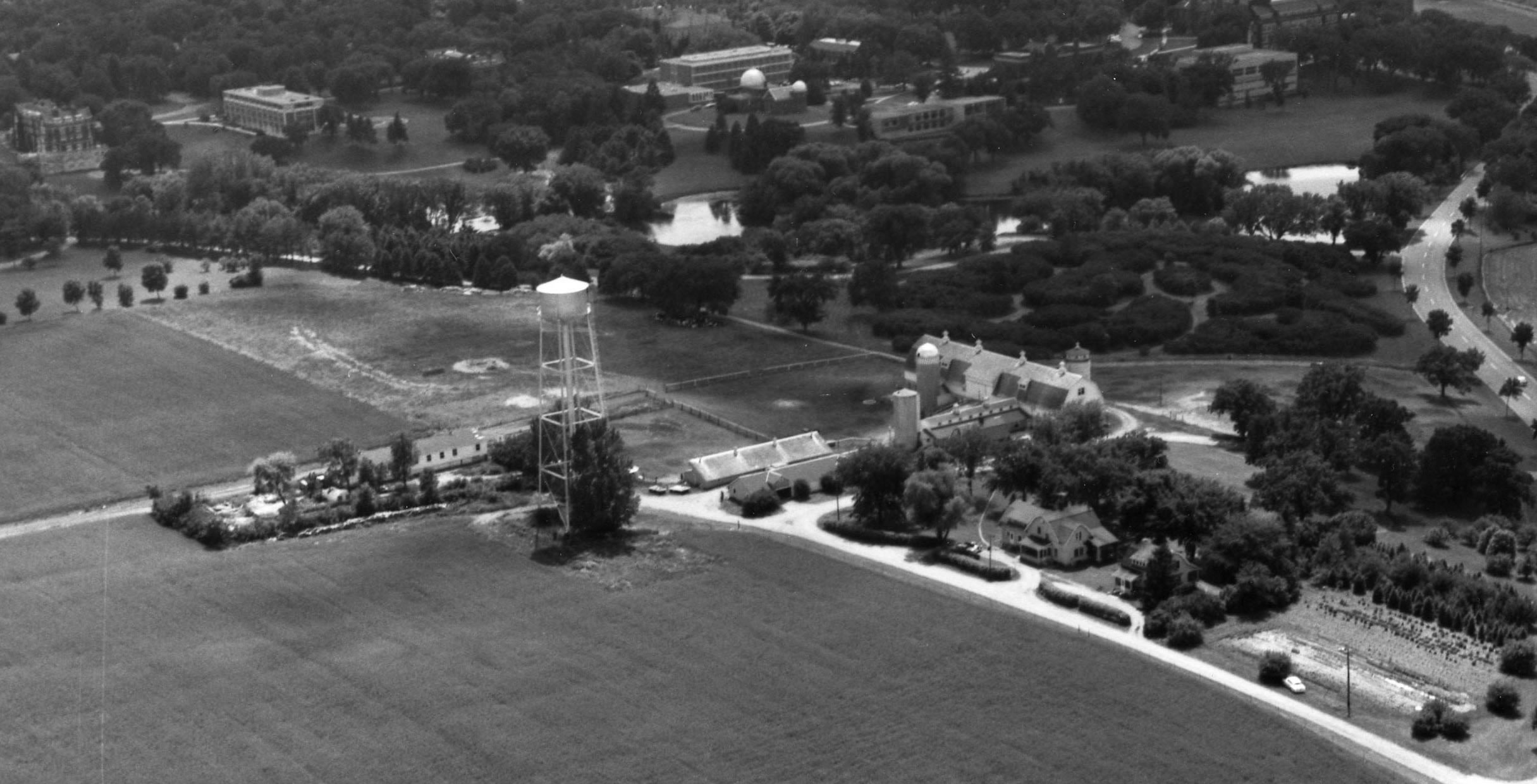
Farmelton
The Carleton Farm
A project of the Bio 160 Agroecology Course
A History of Farming at Carleton
The Final Harvest
1960-1964
1962
The process by which the Carleton farm dissolved is slightly ambigous, though it is clear that over the years the farm came to mean something different to the student body.
"Carleton students drink about 230-240 gallons of milk a day," said Frank Bowe, manager of the Carleton farm, "and that's one of the main reasons we exist." But students may differ as to the farm's "main purpose"-- judging from the number of bottles, cans, and cigarette wrappers found in the hayloft, and from a 1960 incident in which Carls renovated an old root cellar under the barn."
-Carletonian April 11th 1962

Aerial photo of Carleton's campus circa 1961: Farm in foreground.
1964
In 1964, after years of operating with little or no profit, it was recommended that the school shut down the farm. In a letter to the president of the college, Frank Wright (the farm manager) wrote: “We have reluctantly come to the conclusion that it is unrealistic to expect a profitable operation on the farm using hired labor”. His recommendations to President Nason were: “That the herd and equipment be sold at a public auction on May 23rd, that the financial gain from sale of these assets be used to reduce the college’s investment in the farm buildings, that the college lease the farm land on a 50% share crop basis starting this spring.”. His final words in the letter were, “We have only 2 regrets, one that we hate to admit defeat and, two, that we didn’t have the sense to admit defeat five years ago.” In a later letter to a friend, Frank Wright wrote: “We undoubtedly should have gone out of business five or six years ago but because of the reputation of the herd and the fact that the farm had been in existence for 50 years, we went beyond the desirable dissolution rate in trying to find the means to make the operation of the herd profitable”. Therefore, despite the herd’s reputation, it was slowly dismantled after 1964.
The irony that the dissolution of the Carleton farm took place during the country's environmental renaissance is tragic; however, new organizations like the Natural Resource Interest House sought to revise the goals of the farm for a new generation.